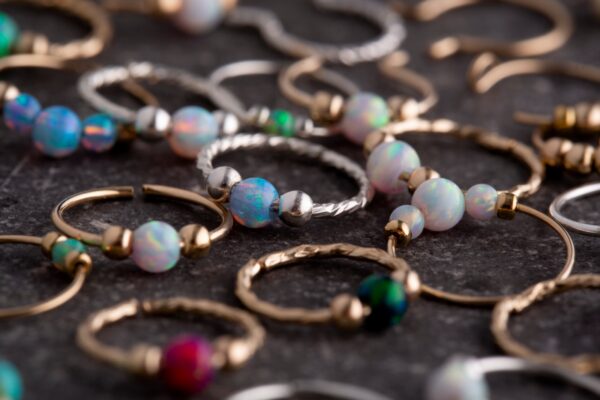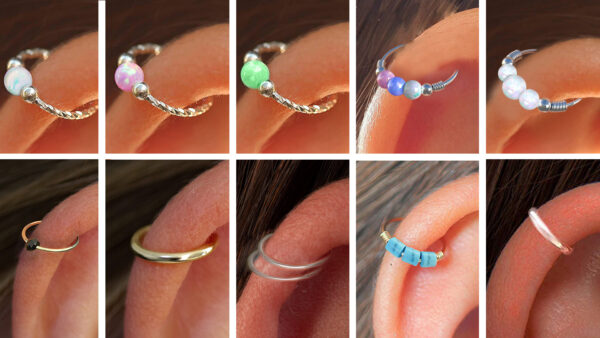PRESCRIBE
IRRESPONSIBILY
Jolliz Handmade Jewelry
Pros and Cons of Getting a Cartilage Piercing
If you are reading this article, the chances are that you are thinking of getting a cartilage ear piercing (AKA Helix Piercing), but you still haven’t got an idea of whether you should or shouldn’t get one. You might be confused because everyone is telling you whether you should get piercings or not. If so, you came to the right place. We will weigh down the pros and cons for you to make your decision to get a cartilage piercing as easy as possible.
Pros
After healing, they don’t require much attention
Compared to a lobe piercing, which usually takes 3-6 months to completely heal. Cartilage piercing can take anywhere from 4-12 months to fully heal and it is said to be a little more painful than piercing your lobes. But, once the cartilage piercing has fully healed, it doesn’t require any aftercare. Just a simple rinse with water from time to time will be enough.
There is a large variety to choose from
There is a lot of room for self-expression and creativity when it comes to choosing Ada banyak cara supaya anda bisa menang ketika sedang bermain daftar judi slot online menggunakan aplikasi terbaik. Untuk selengkapnya, anda bisa klik pada gambar jika ingin mencoba bermain situs khusus judi slot https://chevromist.com.au/slot-pulsa/ online terpercaya langsung dan merasakan betapa enaknya main judi slot langsung dapat jackpot.
what piercing to wear due to enough cartilage tissue around the ear and a very large variety of piercings to choose from. From shapes such as hoops, studs, and spirals, to materials like silver, gold, and rose gold to gemstone options and colors you can use to make your piercing enhance your personality.
You can stack up a few piercings to give your helix a genuinely unique and creative look.
Here you can see some examples of earrings that can be used:
They don’t take long to pierce
Professional piercers typically use a needle or a piercing gun to put a new piercing in place, and the whole process doesn’t take long. Usually, about 10-20 minutes and you are out of there. Be sure to ask your piercer to explain how you should take care of your new piercing so the healing process will go smoothly.
Important note: After you have decided to go and get your ear piercing, whether it’s a helix piercing, lobe, nose piercing, or any other place on your body, be sure to look for professional piercers. A good way nowadays is to go and check their Instagram page to see all their work and to read customer reviews, you do not want an amateur piercer to damage your skin.
Cons
It’ll take a lot of time to heal
Because cartilage tissues don’t have blood flowing in them, the healing process is significantly slower, compared to a lobe piercing.
As mentioned above, usually the whole healing period is 4-12 months long.
They can make sleeping more of a painful experience.
Like any other piercing that is still in the healing process, you are better off avoiding touching or applying pressure to it. Doing so will decrease the chances of getting an infection. That’s why sleeping can be a small challenge at first because your body is still not used to having a metal rod through it. But don’t worry too much, the pain is usually tolerable and your sleep won’t be affected after a week or two.
Your body might take a while to adjust.
Although you might be ready to get an ear cartilage piercing, your body might not. This can happen for a few reasons. Your body might have an allergic reaction to the type of metal of the earing or the equipment not properly sanitized. However, you can prevent it by using high-quality earrings and by properly sanitizing the equipment.
Conclusion
Even with the pros and cons of cartilage piercing weighed, it’s still your personal choice. If you think you’re not ready for ear piercing, then it’s okay to wait a little longer, but if you can handle the cons, what are you waiting for?

Want to be ready with your own earrings?
Visit our store to see all the variants of cartilage helix earring hoops and studs.


